-
 Bitcoin
Bitcoin $76,444.7530
-3.77% -
 Ethereum
Ethereum $1,473.8355
-5.46% -
 Tether USDt
Tether USDt $0.9991
-0.08% -
 XRP
XRP $1.7965
-5.51% -
 BNB
BNB $553.4919
-0.36% -
 USDC
USDC $0.9999
-0.02% -
 Solana
Solana $105.2981
-1.74% -
 TRON
TRON $0.2303
0.81% -
 Dogecoin
Dogecoin $0.1422
-4.62% -
 Cardano
Cardano $0.5587
-4.41% -
 UNUS SED LEO
UNUS SED LEO $8.9866
1.01% -
 Toncoin
Toncoin $2.9933
-4.74% -
 Chainlink
Chainlink $10.9113
-4.81% -
 Stellar
Stellar $0.2215
-4.76% -
 Avalanche
Avalanche $16.1163
-3.29% -
 Sui
Sui $1.9371
-3.89% -
 Shiba Inu
Shiba Inu $0.0...01065
-6.69% -
 Hedera
Hedera $0.1469
-3.29% -
 MANTRA
MANTRA $6.2058
-1.53% -
 Dai
Dai $1.0000
0.01% -
 Bitcoin Cash
Bitcoin Cash $269.3457
-2.08% -
 Polkadot
Polkadot $3.3773
-5.87% -
 Litecoin
Litecoin $69.2204
-2.50% -
 Ethena USDe
Ethena USDe $0.9986
-0.01% -
 Bitget Token
Bitget Token $4.0180
-3.25% -
 Pi
Pi $0.5649
-4.50% -
 Hyperliquid
Hyperliquid $11.1928
-2.80% -
 Monero
Monero $195.3885
-4.41% -
 OKB
OKB $50.9235
-0.59% -
 Uniswap
Uniswap $4.7688
-6.95%
How to view BSC wallet address in Trust Wallet
To view your BSC wallet address in Trust Wallet, tap "Receive," select "Smart Chain" or "BNB," and see your address starting with "0x" for managing BSC assets securely.
Apr 05, 2025 at 03:42 pm
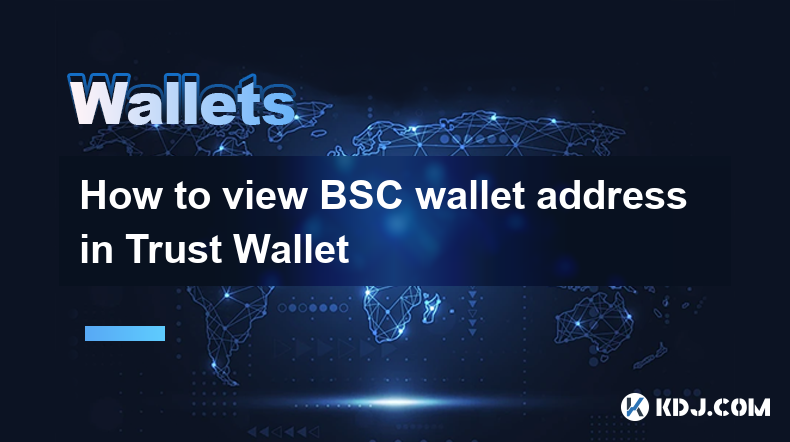
When managing your cryptocurrencies, understanding how to view your wallet address is crucial. This is especially true for Binance Smart Chain (BSC) assets held in Trust Wallet. Trust Wallet is a popular choice for its user-friendly interface and support for a wide range of cryptocurrencies. In this guide, we will walk you through the steps to view your BSC wallet address in Trust Wallet, ensuring you can easily manage your digital assets.
To begin, you need to ensure that you have the Trust Wallet app installed on your mobile device. Trust Wallet is available for both iOS and Android platforms. Once installed, open the app and make sure you are logged into your account. If you are new to Trust Wallet, you will need to set up a new wallet by following the on-screen instructions, which include creating a secure password and safely storing your recovery phrase.
Accessing Your BSC Wallet
After logging into Trust Wallet, you will see the main dashboard displaying your various cryptocurrency balances. To access your BSC wallet, you need to navigate to the list of supported cryptocurrencies. Here's how you can do it:
- Tap on the "Receive" button located at the bottom of the screen.
- A list of cryptocurrencies will appear. Scroll through this list until you find "Smart Chain" or "BNB" (Binance Coin), which is the native token of the Binance Smart Chain.
- Tap on "Smart Chain" or "BNB" to proceed to the next step.
Viewing Your BSC Wallet Address
Once you have selected "Smart Chain" or "BNB," you will be taken to a screen where you can view your BSC wallet address. Here's what you need to do:
- On the "Receive" screen for Smart Chain, you will see your BSC wallet address displayed prominently. This address is a long string of alphanumeric characters that starts with "0x".
- You can tap on the address to copy it to your clipboard. This is useful if you need to share your address with someone or if you want to use it in another application.
- Additionally, you can generate a QR code for your BSC wallet address by tapping on the "Show QR Code" button. This QR code can be scanned by others to quickly send BSC assets to your wallet.
Verifying Your BSC Wallet Address
It's important to verify that the BSC wallet address you see in Trust Wallet is correct. Here are some steps to ensure accuracy:
- Double-check the address displayed on the screen. Make sure it starts with "0x" and is the correct length (typically 42 characters long).
- If you have previously used this address to receive BSC assets, you can check your transaction history to confirm that it matches the address shown in Trust Wallet.
- You can also use a blockchain explorer like BscScan to verify your address. Simply paste your BSC wallet address into the search bar on BscScan, and it will show you the transaction history and balance associated with that address.
Using Your BSC Wallet Address
Now that you know how to view and verify your BSC wallet address in Trust Wallet, you can start using it to receive BSC assets. Here are some common scenarios where you might need to use your BSC wallet address:
- Receiving BNB or other BSC tokens: When someone wants to send you BNB or any other token on the Binance Smart Chain, they will need your BSC wallet address. You can share this address with them directly or provide them with the QR code.
- Participating in BSC-based DeFi projects: Many decentralized finance (DeFi) projects on the Binance Smart Chain require you to connect your wallet to their platform. You can use your BSC wallet address to interact with these projects, such as staking, lending, or swapping tokens.
- Interacting with BSC dApps: Decentralized applications (dApps) on the Binance Smart Chain often require you to connect your wallet to use their services. Your BSC wallet address is essential for these interactions.
Security Tips for Your BSC Wallet Address
While using your BSC wallet address, it's crucial to keep security in mind. Here are some tips to protect your wallet and assets:
- Never share your private key or recovery phrase: Your BSC wallet address is public, but your private key and recovery phrase should remain secret. Sharing these can lead to unauthorized access to your wallet.
- Use strong passwords: Ensure that your Trust Wallet account is protected by a strong, unique password.
- Enable two-factor authentication (2FA): If Trust Wallet supports 2FA, enable it to add an extra layer of security to your account.
- Be cautious of phishing attempts: Always double-check the source of any request for your BSC wallet address. Phishing scams can trick you into sending your assets to fraudulent addresses.
Troubleshooting Common Issues
Sometimes, you might encounter issues when trying to view your BSC wallet address in Trust Wallet. Here are some common problems and their solutions:
- Address not displaying: If your BSC wallet address is not showing up, ensure that you have selected the correct cryptocurrency (Smart Chain or BNB). If the issue persists, try restarting the app or reinstalling it.
- Incorrect address: If you suspect that the displayed address is incorrect, double-check it against your transaction history or use a blockchain explorer like BscScan to verify it.
- App crashes or freezes: If Trust Wallet crashes or freezes when you try to view your BSC wallet address, try clearing the app's cache or reinstalling it. If the problem continues, contact Trust Wallet support for assistance.
Advanced Features in Trust Wallet
Trust Wallet offers several advanced features that can enhance your experience with BSC assets. Here are some of them:
- Multi-coin support: Trust Wallet supports a wide range of cryptocurrencies, including those on the Binance Smart Chain. You can manage multiple BSC tokens within the same wallet.
- Staking and earning: Trust Wallet allows you to stake certain BSC tokens to earn rewards. This can be a great way to grow your crypto holdings.
- DApp browser: Trust Wallet includes a built-in DApp browser that lets you interact with BSC-based decentralized applications directly from the app.
Conclusion
Viewing your BSC wallet address in Trust Wallet is a straightforward process that involves navigating to the "Receive" section and selecting "Smart Chain" or "BNB." By following the steps outlined in this guide, you can easily access, verify, and use your BSC wallet address for various purposes. Remember to keep security in mind and take advantage of Trust Wallet's advanced features to enhance your experience with BSC assets.
Common Questions:
Q1: What is a BSC wallet address?
A BSC wallet address is a unique string of alphanumeric characters that starts with "0x" and is used to receive and send assets on the Binance Smart Chain. It serves as your public identifier on the BSC network.
Q2: How do I know if my BSC wallet address is correct in Trust Wallet?
You can verify your BSC wallet address by double-checking the displayed address, reviewing your transaction history, or using a blockchain explorer like BscScan to confirm the address and its associated transactions.
Q3: Can I use my BSC wallet address to receive other cryptocurrencies?
Your BSC wallet address is specific to the Binance Smart Chain and can only be used to receive BSC assets, such as BNB and other BSC tokens. For other cryptocurrencies, you will need to use the corresponding wallet address for each blockchain.
Q4: What should I do if I accidentally share my BSC wallet address with someone?
Sharing your BSC wallet address is generally safe, as it is a public key. However, be cautious of phishing attempts and never share your private key or recovery phrase. If you suspect any suspicious activity, monitor your wallet closely and consider moving your assets to a new address.
Q5: How can I protect my BSC wallet address and assets in Trust Wallet?
To protect your BSC wallet address and assets, use strong passwords, enable two-factor authentication if available, never share your private key or recovery phrase, and be vigilant against phishing attempts. Regularly update the Trust Wallet app and keep your device secure.
Disclaimer:info@kdj.com
The information provided is not trading advice. kdj.com does not assume any responsibility for any investments made based on the information provided in this article. Cryptocurrencies are highly volatile and it is highly recommended that you invest with caution after thorough research!
If you believe that the content used on this website infringes your copyright, please contact us immediately (info@kdj.com) and we will delete it promptly.
- "Cardano (ADA) Price Could Dip Below $0.60, Following Previous Market Cycle"
- 2025-04-09 05:10:12
- BONK, the well-known meme coin, has risen over 35% in the last week, attracting meme coin investors in the market. So, what caused this rally?
- 2025-04-09 05:10:12
- Bitcoin (BTC) Investors May Not Exactly Feel It, but BTC Has Been a Relatively Good Bet
- 2025-04-09 05:05:12
- Donald's Bitcoin (DONBTC) Could Turn Early Investors into Multi-Millionaires, Like Shiba Inu (SHIB) and Dogecoin (DOGE) Did
- 2025-04-09 05:05:12
- 6 Upcoming Kraken Listings That Could Be the Next Big Thing in Crypto
- 2025-04-09 05:00:13
- COTI Unveils New Privacy-Focused Blockchain to Reshape Web3 Transactions
- 2025-04-09 05:00:13
Related knowledge
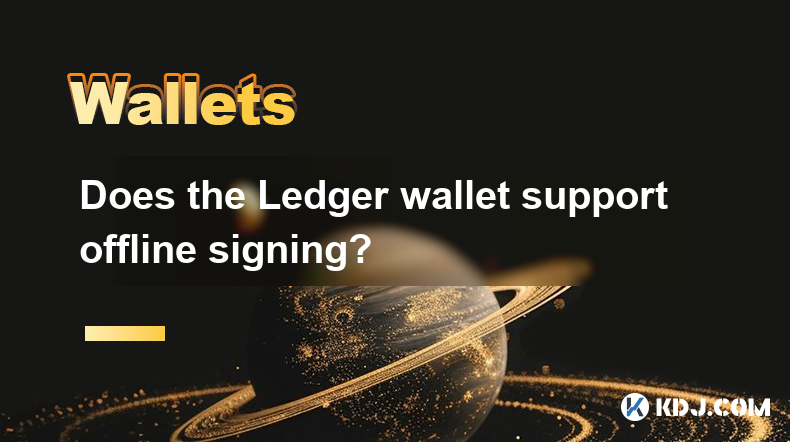
Does the Ledger wallet support offline signing?
Apr 09,2025 at 04:49am
Introduction to Ledger Wallet and Offline SigningThe Ledger wallet is a popular hardware wallet used by cryptocurrency enthusiasts to securely store their digital assets. One of the key features that users often inquire about is offline signing. Offline signing, also known as cold signing, is a security measure that allows users to sign transactions wit...
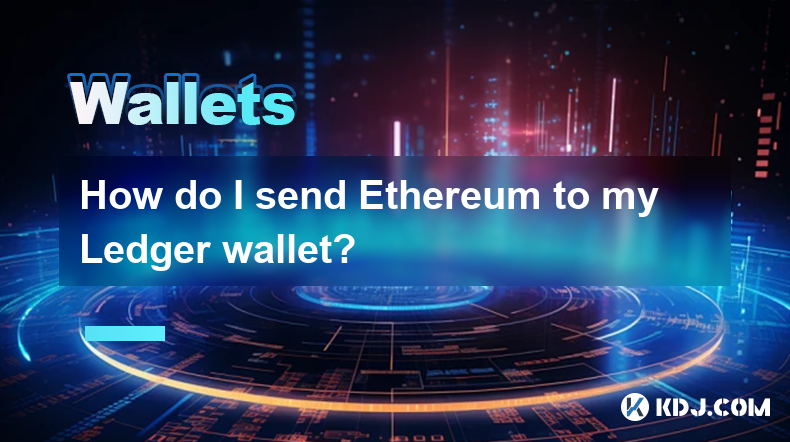
How do I send Ethereum to my Ledger wallet?
Apr 09,2025 at 03:21am
Sending Ethereum to your Ledger wallet involves a few straightforward steps, but it's crucial to follow them carefully to ensure the security of your funds. In this guide, we'll walk you through the process of transferring Ethereum to your Ledger wallet, ensuring that you understand each step and the necessary precautions. Preparing Your Ledger WalletBe...
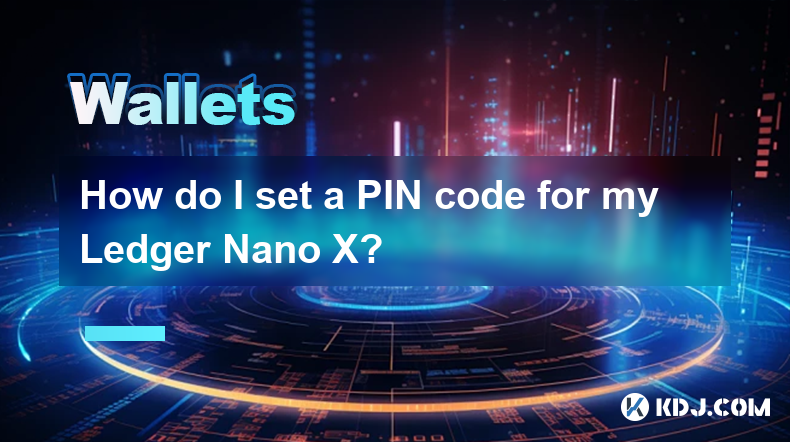
How do I set a PIN code for my Ledger Nano X?
Apr 08,2025 at 11:14pm
Setting a PIN code for your Ledger Nano X is a crucial step in securing your cryptocurrency assets. The PIN code acts as a primary layer of security, ensuring that only you can access your device. In this article, we will guide you through the process of setting up a PIN code on your Ledger Nano X, ensuring that you follow each step meticulously to main...
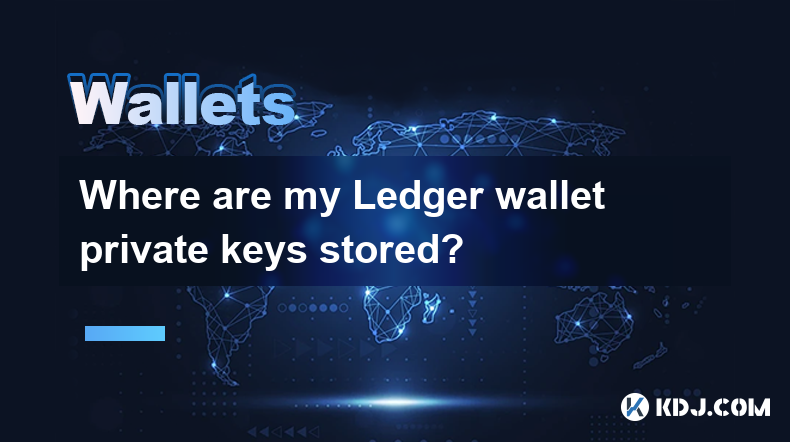
Where are my Ledger wallet private keys stored?
Apr 08,2025 at 10:35pm
When using a Ledger hardware wallet, one of the most critical aspects to understand is the storage and management of your private keys. This article will delve into the specifics of where your Ledger wallet private keys are stored, ensuring you have a comprehensive understanding of their security and accessibility. Understanding Private Keys in Ledger W...
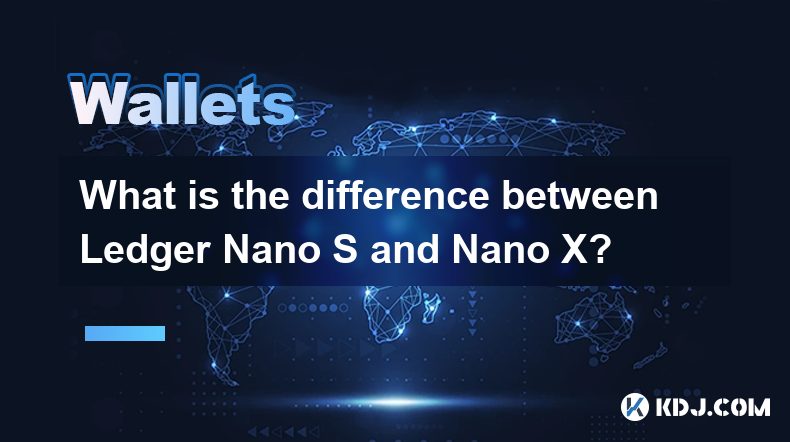
What is the difference between Ledger Nano S and Nano X?
Apr 09,2025 at 12:49am
When it comes to securing your cryptocurrencies, hardware wallets are often recommended as the safest option. Among the most popular hardware wallets are the Ledger Nano S and Ledger Nano X. Both devices are produced by Ledger, a well-known company in the cryptocurrency security industry. This article will delve into the differences between these two de...

How do I enable the Shield Transaction feature on Trezor?
Apr 08,2025 at 10:28pm
Enabling the Shield Transaction feature on Trezor involves a series of steps that allow you to enhance the privacy of your cryptocurrency transactions. This feature is particularly useful for users who want to protect their transaction history from being easily traced on the blockchain. In this article, we will guide you through the process of enabling ...

Does the Ledger wallet support offline signing?
Apr 09,2025 at 04:49am
Introduction to Ledger Wallet and Offline SigningThe Ledger wallet is a popular hardware wallet used by cryptocurrency enthusiasts to securely store their digital assets. One of the key features that users often inquire about is offline signing. Offline signing, also known as cold signing, is a security measure that allows users to sign transactions wit...

How do I send Ethereum to my Ledger wallet?
Apr 09,2025 at 03:21am
Sending Ethereum to your Ledger wallet involves a few straightforward steps, but it's crucial to follow them carefully to ensure the security of your funds. In this guide, we'll walk you through the process of transferring Ethereum to your Ledger wallet, ensuring that you understand each step and the necessary precautions. Preparing Your Ledger WalletBe...

How do I set a PIN code for my Ledger Nano X?
Apr 08,2025 at 11:14pm
Setting a PIN code for your Ledger Nano X is a crucial step in securing your cryptocurrency assets. The PIN code acts as a primary layer of security, ensuring that only you can access your device. In this article, we will guide you through the process of setting up a PIN code on your Ledger Nano X, ensuring that you follow each step meticulously to main...

Where are my Ledger wallet private keys stored?
Apr 08,2025 at 10:35pm
When using a Ledger hardware wallet, one of the most critical aspects to understand is the storage and management of your private keys. This article will delve into the specifics of where your Ledger wallet private keys are stored, ensuring you have a comprehensive understanding of their security and accessibility. Understanding Private Keys in Ledger W...

What is the difference between Ledger Nano S and Nano X?
Apr 09,2025 at 12:49am
When it comes to securing your cryptocurrencies, hardware wallets are often recommended as the safest option. Among the most popular hardware wallets are the Ledger Nano S and Ledger Nano X. Both devices are produced by Ledger, a well-known company in the cryptocurrency security industry. This article will delve into the differences between these two de...

How do I enable the Shield Transaction feature on Trezor?
Apr 08,2025 at 10:28pm
Enabling the Shield Transaction feature on Trezor involves a series of steps that allow you to enhance the privacy of your cryptocurrency transactions. This feature is particularly useful for users who want to protect their transaction history from being easily traced on the blockchain. In this article, we will guide you through the process of enabling ...
See all articles






















































































